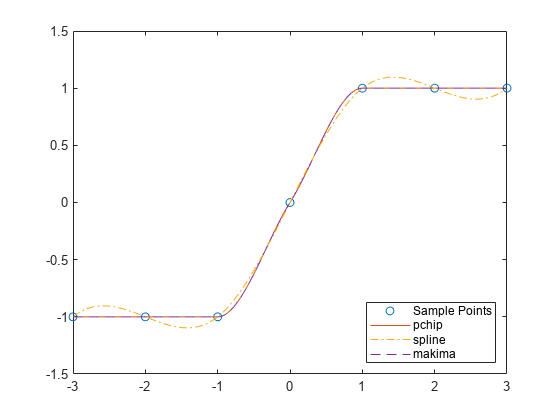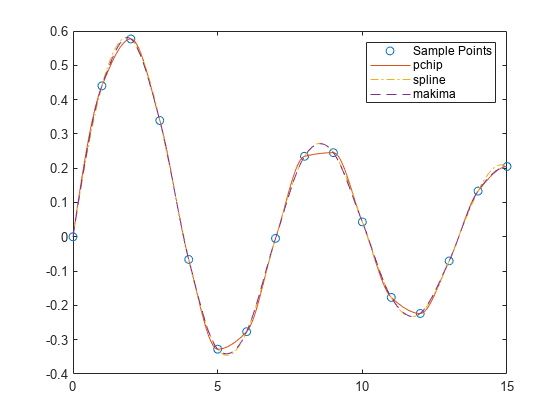pchip
区分的 3 次エルミート内挿多項式 (PCHIP)
説明
例
入力引数
出力引数
詳細
ヒント
splineは、pchipが を構築する方法とほぼ同じ方法で を構築します。ただし、splineは で異なる傾き、つまり も連続になる傾きを選択します。この差異により、いくつかの影響が生じます。splineでは、 が連続になるような、より平滑な結果が生成されます。関数
splineは、データが平滑関数の値の場合、より正確になります。関数
pchipは、データが平滑でない場合、オーバーシュートが生じず、振動が少なくなります。関数
pchipは、セットアップが簡単です。2 つとも計算量が多くなります。
参照
[1] Fritsch, F. N. and R. E. Carlson. "Monotone Piecewise Cubic Interpolation." SIAM Journal on Numerical Analysis. Vol. 17, 1980, pp.238–246.
[2] Kahaner, David, Cleve Moler, Stephen Nash. Numerical Methods and Software. Upper Saddle River, NJ: Prentice Hall, 1988.
拡張機能
バージョン履歴
R2006a より前に導入


